
Duke of York is a title of nobility in the Peerage of the United Kingdom. Since the 15th century, it has, when granted, usually been given to the second son of English monarchs. The equivalent title in the Scottish peerage was Duke of Albany. However, King George II and King George III granted the titles Duke of York and Albany.

The House of Hanover is a European royal house with roots tracing back to the 17th century. Its members, known as Hanoverians, ruled Hanover, Great Britain, Ireland, and the British Empire at various times during the 17th to 20th centuries. Originating as a cadet branch of the House of Welf in 1635, also known then as the House of Brunswick-Lüneburg, the Hanoverians ascended to prominence with Hanover's elevation to an Electorate in 1692. In 1714 George I, prince-elector of Hanover and a descendant of King James VI and I, assumed the throne of Great Britain and Ireland, marking the beginning of Hanoverian rule over the British Empire. At the end of his line, Queen Victoria's death in 1901, the throne of the United Kingdom passed to her eldest son Edward VII, a member of the House of Saxe-Coburg and Gotha, through his father Albert, Prince Consort. The last reigning members of the House of Hanover lost the Duchy of Brunswick in 1918 when Germany became a republic and abolished royalty and nobility.
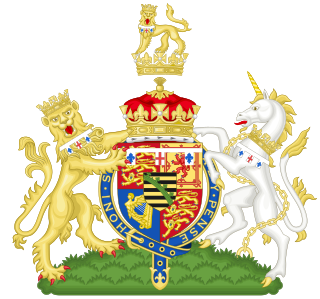
Duke of Connaught and Strathearn was a title in the Peerage of the United Kingdom that was granted on 24 May 1874 by Queen Victoria of the United Kingdom of Great Britain and Ireland to her third son, Prince Arthur. At the same time, he was also granted the subsidiary title of Earl of Sussex.
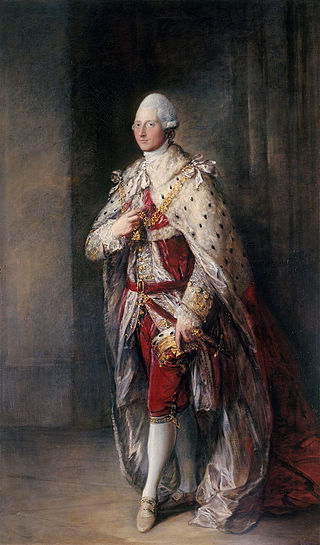
Prince Henry, Duke of Cumberland and Strathearn was the sixth child and fourth son of Frederick, Prince of Wales, and Princess Augusta of Saxe-Gotha, and a younger brother of George III. His 1771 marriage to a commoner against the King's wishes prompted the Royal Marriages Act 1772.

Duke of Kent is a title that has been created several times in the peerages of Great Britain and the United Kingdom, most recently as a royal dukedom for the fourth son of King George V. Since 1942, the title has been held by Prince Edward, a first cousin of Queen Elizabeth II.

Duke of Cambridge is a hereditary title of nobility in the British royal family, one of several royal dukedoms in the United Kingdom. The title is named after the city of Cambridge in England. It is heritable by male descendants by primogeniture, and has been conferred upon various members of the British royal family several times throughout history.

Duke of Cumberland is a peerage title that was conferred upon junior members of the British royal family, named after the historic county of Cumberland.
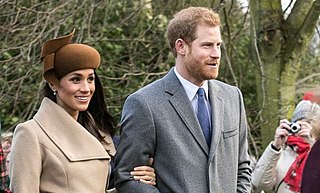
Duke of Sussex is a substantive title, one of several royal dukedoms in the Peerage of the United Kingdom. It is a hereditary title of a specific rank of nobility in the British royal family. It has been created twice and takes its name from the historic county of Sussex in England.

Alastair Arthur Windsor, 2nd Duke of Connaught and Strathearn was a member of the British Royal Family. He was the only child of Prince Arthur of Connaught and Princess Alexandra, 2nd Duchess of Fife. He was a great-grandson of Queen Victoria through his father and a great-great-grandson of Queen Victoria through his mother. He was also a descendant of Victoria's paternal uncle and predecessor, William IV, through an illegitimate line.
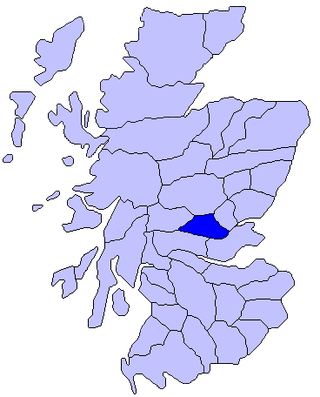
Strathearn or Strath Earn, also the Earn Valley, is the strath of the River Earn, which flows from Loch Earn to meet the River Tay in the east of Scotland.

Duchess of Kent is the principal courtesy title used by the wife of the Duke of Kent. There have been four titles referring to Kent since the 18th century. The current duchess is Katharine, the wife of Prince Edward. He inherited the dukedom on 25 August 1942 upon the death of his father, Prince George, the fourth son of George V.
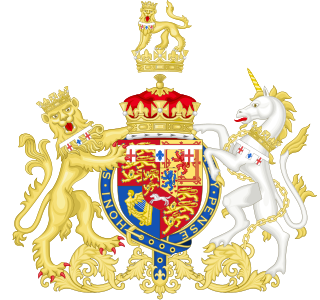
Duke of Cumberland and Teviotdale was a title in the Peerage of Great Britain that was held by junior members of the British royal family. It was named after the county of Cumberland in England, and after Teviotdale in Scotland. Held by the Hanoverian royals, it was suspended under the Titles Deprivation Act 1917, which revoked titles belonging to enemies of the United Kingdom during the Great War.

Earl of Sussex is a title that has been created several times in the Peerages of England, Great Britain, and the United Kingdom. The early Earls of Arundel were often also called Earls of Sussex.
Earl of Dublin is a title that has been created three times in British and Irish history.

Earl of Carhampton was a title in the Peerage of Ireland. It was created in 1785 for Simon Luttrell, 1st Viscount Carhampton. He had already been created Baron Irnham, of Luttrellstown in the County of Dublin, in 1768 and Viscount Carhampton, of Castlehaven in the County of Cork, in 1781, also in the Peerage of Ireland. He was the son of Henry Luttrell. His daughter Anne Horton married Prince Henry, Duke of Cumberland and Strathearn. Lord Carhampton was succeeded by his eldest son, the second earl. He was a general in the British Army and served as the commander-in-chief of Ireland from 1796 to 1798. He was childless and was succeeded by his younger brother, the third earl. He was a captain in the Royal Navy and also sat as Member of Parliament for Stockbridge. He married as his first wife the Honourable Elizabeth Olmius, daughter of John Olmius, 1st Baron Waltham, and assumed in 1787 by royal licence the additional surname of Olmius. Lord Carhampton had no sons and the titles became extinct on his death in 1829. Already the same year George IV offered to revive the earldom in favour of Sir Simeon Stuart, 5th Baronet, son of Sir Simeon Stuart, 4th Baronet, and his wife Lady Frances Maria, daughter of the third earl. However, the offer was declined.

Earl or Mormaer of Strathearn is a title of Scottish nobility, referring to the region of Strathearn in southern Perthshire. Of unknown origin, the mormaers are attested for the first time in a document perhaps dating to 1115. The first known mormaer, Malise I, is mentioned by Ailred of Rievaulx as leading native Scots in the company of King David at the Battle of the Standard, 1138. The last ruler of the Strathearn line was Malise, also Earl of Caithness and Orkney, who had his earldom forfeited by King Edward Balliol. In 1344 it was regranted by King David to Maurice de Moravia, a royal favourite who had a vague claim to the earldom as Malise's nephew and also stepfather.

Duke of Kent and Strathearn is a title that was created once in the Peerage of Great Britain.
The title Duke of Strathearn has never existed, but there have been three dukedoms with "Strathearn" in the title:
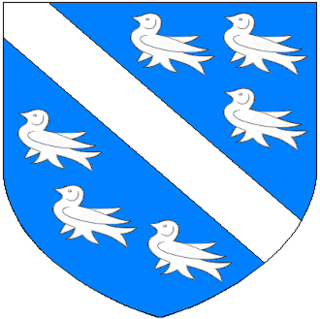
Simon Luttrell, 1st Earl of Carhampton was an Anglo-Irish politician and peer who sat in the British House of Commons from 1754 to 1780.
In the British peerage, a royal duke is a member of the British royal family, entitled to the titular dignity of prince and the style of His Royal Highness, who holds a dukedom. Dukedoms are the highest titles in the British roll of peerage, and the holders of these particular dukedoms are princes of the blood royal. The holders of the dukedoms are royal, not the titles themselves. They are titles created and bestowed on legitimate sons and male-line grandsons of the British monarch, usually upon reaching their majority or marriage. The titles can be inherited but cease to be called "royal" once they pass beyond the grandsons of a monarch. As with any peerage, once the title becomes extinct, it may subsequently be recreated by the reigning monarch at any time.


















